The Plaza Theatre Building
Introduction
Text-to-speech Audio
The Plaza Theater opened in 1928, offering entertainment to the nation's first outdoor shopping district. Keeping with the Plaza’s overall theme, architect Edward Tanner designed the building using Spanish style elements, including elaborate detail along the roofline, around the arched windows and in the accompanying 72 foot tower. The detail continues to the interior with magnificent ceilings, decorative painted tile, and large carved wooden doors. The main foyer mimics a Spanish court, featuring a red tile floor, benches surrounding a fountain, and railed, second level balcony. Over the years, the theater presented award winning films, was the site for a series of performances sponsored by the Kansas City Music Club, and housed the Kansas City Philharmonic Orchestra. The theater closed in the spring of 1999 and the Restoration Hardware retail store renovated the interior before moving in later that year. The building is currently vacant, however, much of the original design is still visible and remains a significant landmark to the Country Club Plaza.
Images
The Plaza Theater when it first opened in 1928
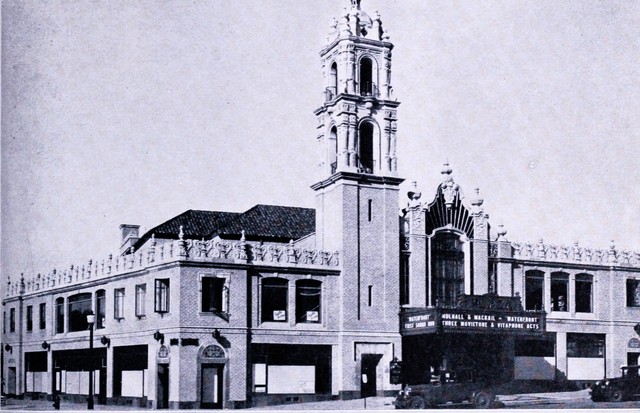
The main foyer of the Plaza Theater mimics a Spanish court as a mariachi band plays on the steps during opening day
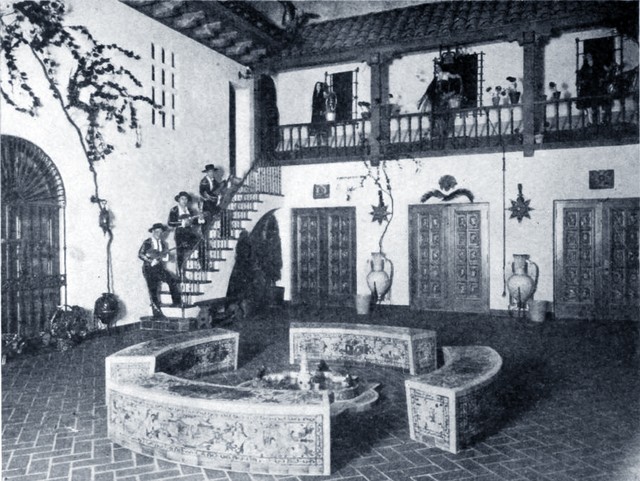
Elaborate detail can be seen throughout the Plaza Theater, including the facade around the screen of the auditorium
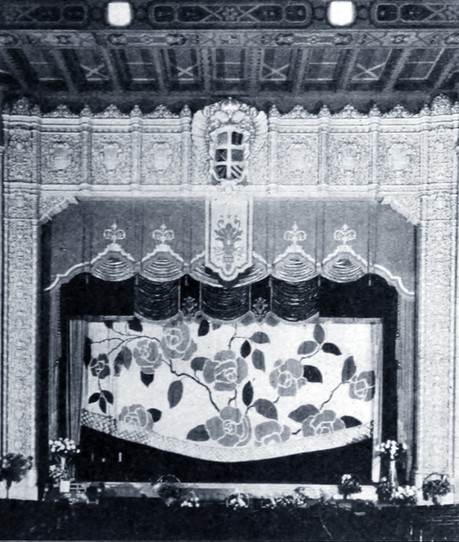
The auditorium of the Plaza Theater features elaborate Baroque detail, seen here in the ceiling
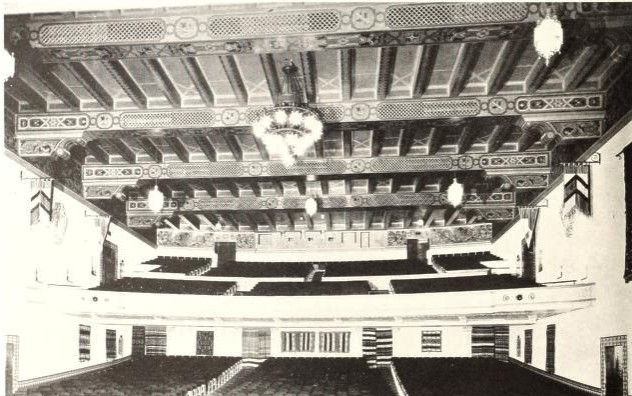
Magnificent arched ceilings and Baroque style pilasters are seen in a foyer of the Plaza Theater
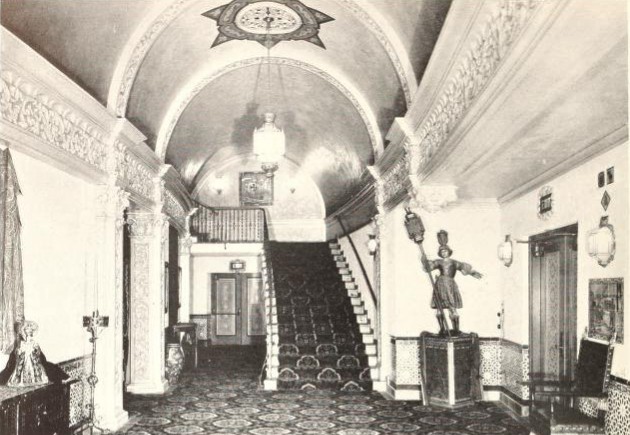
A page in the Kansas City Star advertises the opening of the Plaza Theater, offering multiple showings and free parking
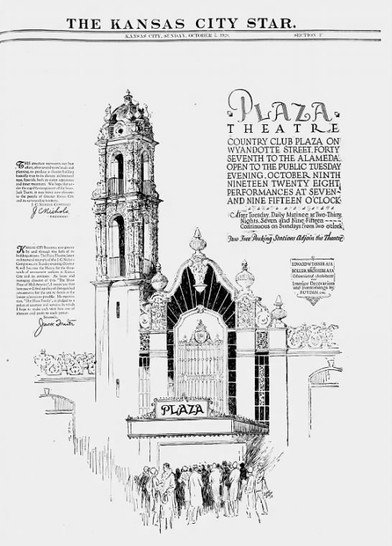
An advertisement for the new Plaza Theater showcases the film "Street Angel" and other distinguished amusement, along with free parking

The Plaza Theater advertising the "Jungle Book" staring Joseph Calleia on its marquee c. 1942
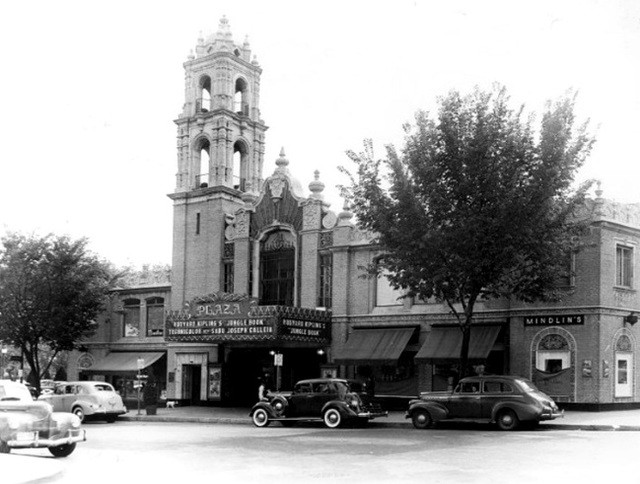
An advertisement for the film "The Ritz" in 1976 at "The New Plaza Twin Theatres" after renovations created a second screen
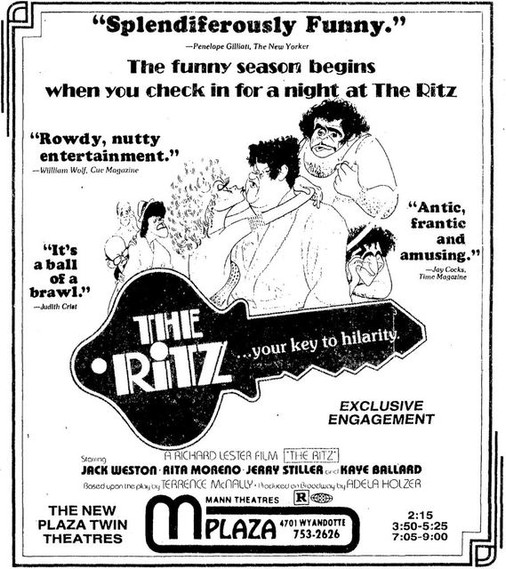
A Mastodon tooth was found while excavating the basement of the Plaza Theatre. Courtesy of Dr. Gentile's exhibit, Giant Mammals of the Ice Age.
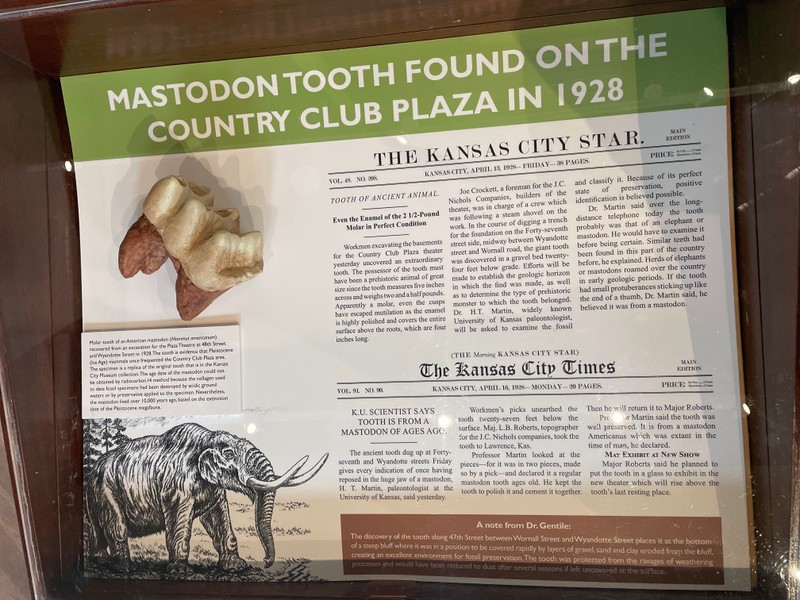
Backstory and Context
Text-to-speech Audio
Opening on October 9, 1928, the Plaza Theater was the first cinematic theater to open outside of downtown. While offering entertainment to the Country Club Plaza’s shopping district, the films also brought a sense of culture that J. C. Nichols envisioned for its patrons. Architect Edward Tanner took over original plans from Edward Delk, who both partnered with Nichols to build the Plaza, maintaining the Spanish motif in which the Plaza was designed after. The exterior of the theater features decorative metalwork, Baroque style detail along the roof and in the arch above the main entrance, accompanied by a 72 foot tower. Spanish elements continue to the interior with elaborate detail on the ceiling and in the facade bordering the screen in the auditorium, large, carved wooden doors, and decorative painted tile throughout. The main foyer mimics a Spanish court with a red tile floor, glazed tiles portraying Spanish military figures, an imported fountain surrounded by benches, and a staircase leading up to the railed, second level balcony.
During excavation of the site, a giant tooth was discovered. The tooth measured five inches wide and weighed about two and half pounds. University of Kansas paleontologist Dr. H.T. Martin examined the specimen and determined it was from a Mastodon, which roamed as far south as Kansas City during the Pleistocene Ice Age. While the tooth seemed to be highly preserved, the collagen used for carbon dating was destroyed. However, based on further research, there is proof these large mammals lived here 10,000 years ago.
The opening show at the Plaza Theater was “Street Angel” with Janet Gaynor, who was the first woman to win an Academy Award for Best Actress. In 1951, the Kansas City Music Club sponsored a series of lectures and performances on Thursday mornings and featured participants including Emmy, Golden Globe, and four-time Academy Award winner Agnes Moorehead from Citizen Kane; Jessica Tandy from Driving Miss Daisy; Claude Rains from Casablanca; prestigious radio broadcaster Edward R. Murrow; and many others. The theater was remodeled in 1961 to accommodate the Kansas City Philharmonic Orchestra and again in the late 70s and early 80s, dividing the auditorium and balcony to install more screens, creating a triplex. The theater was owned by an affiliate of the Fox Company from 1931 through the 60s and had switched hands to Dickinson Theaters before it closed on April 4, 1999 due to looming competition from the 15-screen multiplex down the street. The interior was converted to accommodate the retail store Restoration Hardware, which vacated the space in 2017. While much of the original architecture remains intact, the building is currently unoccupied.
Architect Edward W. Tanner was a long time partner to J. C. Nichols. After receiving a degree from the school of Engineering and Architecture at the University of Kansas, Tanner enlisted as an artillery instructor during World War I. When he returned to Kansas City he was hired as the principal designer for the Nichols Company, but left a few years later to open his own firm. During World War II, Tanner was contracted by the government to design regional hospitals and airfields. After the war he resumed business in Kansas City, also receiving commissions from Nichols while the two continued to build the city’s picturesque landscape. With other Tanner-designed buildings like the Plaza Time Building, the Balcony Building, and the Plaza Medical Building, the Plaza district came to be known nationally as “the Nichols towers with that Tanner wham." Tanner also designed more than 2000 homes in the area, including those of Tom Pendergast and Walter E. Bixby - one of his most modern designs and on the National Register of Historic Places.
Sources
Salley, Paul. Plaza Theater, Cinema Treasures. Accessed December 30th 2021. http://cinematreasures.org/theaters/1434.
Accessed December 30th 2021. https://www.imdb.com/.
Jezak Ford, Susan. Biography of Edward Tanner (1896-1974), Architect, Missouri Valley Special Collections. Accessed December 30th 2021. https://kchistory.org/document/biography-edward-tanner-1896-1974-architect.
Gentile, Dr. Richard. Giant Ice Age Mammals, Clio Foundation. Accessed April 14th 2022. https://theclio.com/entry/140850/tour/1.
http://cinematreasures.org/theaters/1434/photos
http://cinematreasures.org/theaters/1434/photos
http://cinematreasures.org/theaters/1434/photos
http://cinematreasures.org/theaters/1434/photos
https://www.newspapers.com/clip/61061458/plaza-theatre-opening/
http://cinematreasures.org/theaters/1434/photos
http://cinematreasures.org/theaters/1434/photos
http://cinematreasures.org/theaters/1434/photos
Personal photo
